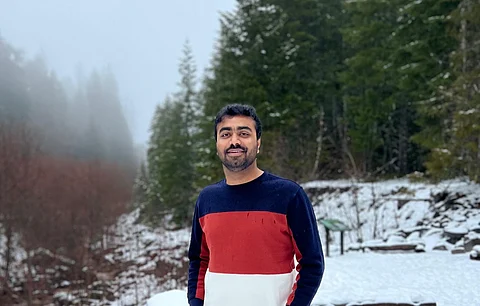

In the fast-paced world of social media, combating misinformation has become a critical priority, particularly during global crises. The rapid spread of false information can have far-reaching consequences, affecting public health, social stability, and trust in digital platforms. Addressing these challenges requires innovative solutions that not only detect and limit misinformation but also promote accurate and authoritative content. This work involves leveraging advanced analytics, machine learning models, and cross-team collaboration to build scalable systems that respond to emergent threats in real-time.
Arjun Reddy Lingala played a pivotal role in developing and leading high-impact projects to fight misinformation during some of the most critical global events. Following his leadership on a project aimed at curbing COVID-19 misinformation, he was promoted to a senior role in software and data engineering. One of his most impactful contributions has been the Rapid Response project, which helped tackle misinformation during the COVID-19 pandemic, the Black Lives Matter movement, and other significant global situations. By designing and developing this system, he enabled swift identification and containment of misinformation, ensuring that accurate information was prioritized and widely disseminated.
A major focus of his work has been supporting his organization’s COVID-19 response, which was a top social issue and integrity priority for the organization. In pursuit of this mission, Arjun developed an analytics platform to track and evaluate the dissemination of COVID-19-related information. This platform contributed to the organization's ability to exceed its goals, achieving 120.47 million clicks against a target of 53 million and 9.56 billion impressions compared to the goal of 8.2 billion. Furthermore, he designed and developed an application to monitor media flagged as COVID-19 and vaccine-related, limiting the spread of misinformation while addressing emergent threats swiftly and effectively.
Among his most significant projects is the COVID Offense initiative, which aimed to support global vaccination efforts by elevating authoritative information while curbing misinformation. Arjun's work on designing the analytics for this project was instrumental in measuring the impact of COVID-related content on the platform. Additionally, he led experiments using Quick Promotions to launch the COVID Information Center and contributed to other impactful initiatives such as Vaccine Stickers and Guides for Vaccinations. Through these efforts, the organization not only achieved its goals but also reinforced its commitment to providing users with accurate, timely information.
Another groundbreaking initiative led is the FAUCVI research project, which evaluated the cumulative impact of this vaccine product and campaign initiatives on users' vaccine intent and uptake behaviors. By designing and developing a model to map user engagement to real-world vaccine outcomes, he helped bring 50 million people closer to receiving COVID-19 vaccines. This data-driven approach not only enhanced the organization's ability to track and measure its social impact but also provided valuable insights for future public health initiatives.
The most interesting challenge has been technical as well as operational challenges. Another major obstacle was integrating and analyzing data comprising text extracted from other sources, such as media captions, video transcripts, and hash-tags. A lot of cooperation would be required across several partner teams to cover and report data widely and accurately. A unified dataset would be a human resources overhead and inefficiency reduction, thereby improving performance in data acquisition and accuracy. This could speed up the time taken to identify false information while maintaining the integrity of the data.
This work shows the good reflection of a common understanding of a quick and exact need for responding to the misinformation that arises in large platforms. Arjun is a strong proponent of "Break Glass"- temporary mechanisms that down-rank potentially harmful content until undergoing a thorough review. Such measures were used in the early phases of the COVID-19 pandemic to narrow down the spread of false information around treatments and vaccines while giving fact-checkers not only time but also a chance to develop responses to such claims that usually happen to appear. These extra efforts, of course, add more work, but they're also vital in curtailing misinformation-spreading activities during critical events while preserving the organization's perception as credible.
It's an approach to ensure quick response readiness to emerging threats while putting an emphasis on transparency and accuracy. As the fight against misinformation goes on, his brings into focus how inopportunity data-driven innovation can be along the lines of cross-functional contributions, as is the case in the battle against misinformation. His works bring both technological advances in the arsenal against misinformation as well as show the ways by which public trust can be achieved through provision of timely and accurate information. Combining technological prowess with a commitment to social responsibility, he keeps forging the frontier of digital integrity and information on reliability.
